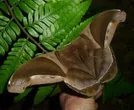Harmful Effects of Southern Pink-striped Oakworm Moth
A species of Oakworms
Larvae of southern Pink-striped Oakworm Moth pose risks to plants by causing defoliation, stunted growth, and reduced fitness, potentially leading to the death of young plants in severe infestations.
What Type of Pest Is Southern Pink-striped Oakworm Moth?









AI entomologist in your pocket
Scan QR code to download

